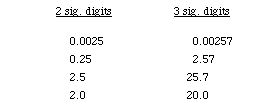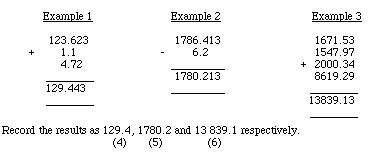Units of measurement, symbols, significant digits and rounding off
1.1 Units of measurement and symbols
1.2 Significant digits
1.3 Rounding off
1.4 Bias, accuracy and precision
Individual Trees and Logs
2.1 Bole characteristics
2.1.1 Diameter
2.1.2 Height
2.1.3 Bark thickness
2.1.4 Volume
2.1.5 Stem form and taper
2.2 Log characteristics
2.2.1 Diameter
2.2.2 Length
2.2.3 Volume
2.2.4 Weight
2.2.5 Allowance for defect
2.3 Crown characteristics
2.3.1 Width
2.3.2 Depth
2.3.3 Surface area
2.3.4 Volume
2.3.5 Biomass
2.4 Stem analysis
Groups of Trees (Stands)
3.1 Number of trees
3.2 Diameter
3.3 Basal area
3.3.1 Fixed-area plots
3.3.2 Angle count sampling
3.3.3 Advantages and disadvantages of angle count sampling
3.4 Height
3.4.1 Mean height
3.4.2 Predominant height, top height, dominant height
3.4.3 Stand height curve
3.5 Volume
3.6 Crown closure
3.7 Crown biomass
3.8 Growth and increment
References
Appendix 1: Checklist of equipment and materials
[RWG#2] [Copyright] [Title Page] [Next Page] [Last Page]
1.2 SIGNIFICANT DIGITS
All measurements are subject to error. This means that one is never able to quote an exact value for a measured physical quantity. If the height of a tree is estimated to lie somewhere between 38.5 and 39.5 m, then the result should be quoted as 39 m, i.e. 3.9 x 10. Such a measurement is said to have been made to two significant digits.
Avoid writing down a long string of numbers that have no significance - it is misleading! Meaningless digits are particularly liable to arise from a series of calculations. To avoid confusion, it is often preferable to write a result using an appropriate power of 10. For example, consider the following calculation:

The result could be written 960 000 m3, but 9.6 x 10^5 m3 is much better because it indicates clearly that only two digits are significant in the result. The rules to apply are:
Rule 1: The significant digits in a number are those reading from left to right, beginning with the first non-zero digit and ending with the last digit written which may be zero, but if zero, it must not result from rounding-off, for example:

It is incorrect to record more significant digits than are actually observed, e.g. length measurements of 8 metres taken to the nearest metre should not be written 8.0 m.
Rule 2: In multiplication and division, the factor with the least number of significant digits limits the number of significant digits in the product or quotient, for example:

The result should be written 321. x 10^2.
The rationale for this is that 895.67 represents a measurement between 895.665 and 895.675 and 35.9 represents a measurement between 35.85 and 35.95, and the products of these four limiting combinations differ in all except the first three digits. In other cases, the number of identical digits in all combinations of the product or quotient will be one less than that in the factor with the least number, for example:

The result should be written 13. x 10^2 or 1.3 x 10^3. Note, however, that the product of 27.146 and 50 (= 1375.3) where 50 is an integer has five significant digits because the number of digits in an integral or whole number is infinite, i.e. the factor in the set with the least number of significant digits is 27.146 with five.
A good rule in a series of multiplications or divisions is to carry one more digit than the number of significant digits in the shorter factor of each set and round off to the proper number of significant digits at the end, for example:

Thus, round-off J to 2 significant digits.
Determining the number of significant digits in addition and subtraction requires that the numbers in the set be first aligned according to their decimal places. The number of significant digits in the result can never be greater than that of the largest of the numbers in the set and often is less. The rule to apply is:
Rule 3: In addition and subtraction, align the numbers according to their decimal places. Identify the largest number in the set and locate the right-most of its digits which aligns with at least the right-most digit of all the other numbers in the set. Count the number of digits to the left of and including that digit to determine the number of significant digits in the result. Consider the following examples:
